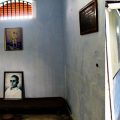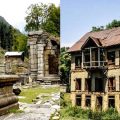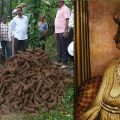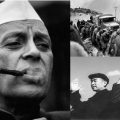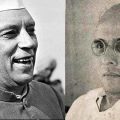Savarkar: How a Nation Failed a Man who Deserved to be Revered
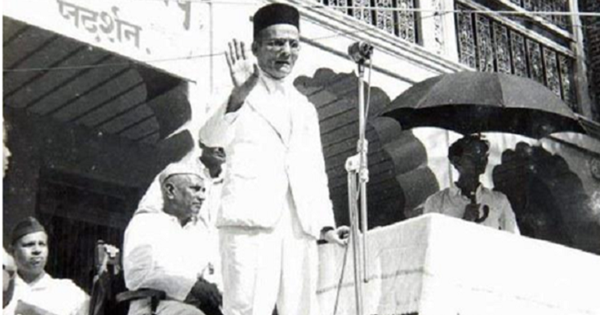
We have known Vinayak Damodar Savarkar as an author, a thinker, a giant nationalist philosopher, a poet, a person convicted for patriotism. We have seen him placed on a pedestal, viciously vilified, often quoted, sung paens to, ridiculed and discarded to the dustbins of history. But most people know little of the man whose life was a roller coaster of struggle, sacrifices, sufferings and defiance. And an unmitigated commitment to uplifting the destiny of his nation. This is an attempt to contextually introduce the man who deserved to be revered by a nation that all but failed him.
Born in Bhagur near Nasik on on 28th May, 1883 at 10 p.m, Veer Savarkar lost his mother to cholera at 10 years of age and his father due to plague at 16. At that young an age, Savarkar vowed to liberate his motherland from the British slavery. With the aim of ‘Absolute Political Independence of India’, he established a group called Mitra Mela of 3 members in 1899 that transformed into Abhinav Bharat in 1904 with branches in England, France, Germany, America, Hong Kong, Singapore and Burma.
“Right from the start, whenever I administered the oath of Abhinav Bharat, I made the newcomers aware of the sacrifices they’ll have to make, forego their houses, property, pleasures of life, reputation, affection of the beloved, & be ready for death”. – Veer Savarkar.
Vinayak Savarkar was a staunch opponent of Partition of Bharatvarsha and a promoter of Indian goods. On 1st October 1905, in a speech, he urged the countrymen to abstain from buying foreign goods and to make a bonfire of all foreign clothes & goods on the day of Dussehra. He was the first Indian to start this movement and the first student to be rusticated from a government institution for political reasons.
With the recommendation of Tilak, Vinayak Savarkar applied for scholarships offered by by Shyamji Krishna Varma to Indians students desiring to study in Europe. On June 9, 1906, 22 year old Vinayak Savarkar, an LLB from Bombay University boarded the ship SS Persia from Bombay to London. On board he met some young Indian students. He started awakening them to India’s politics. Some said they were not interested, some said that it was a condition for their scholarship that they would not take part in any political movement, but gradually he led them to join the freedom struggle. Whatever was the topic of discussion, Savarkar turned and connected it to India’s freedom struggle. His days on ship were spent in educating and enlightening the youth.
There were three main organisations working in India at that time. British Committees of the Indian National National Congress, Dadabhai Naoroji’s London Indian Society and Shyamji Krishna Varma’s Indian Home Rule Society. The aim of Dadabhai and Shyamji was, ‘Self rule under British Empire’ (call it self government, autonomy or home rule). Indian National Congress and Dadabhai swore loyalty to the British Crown. None of them supported armed revolution.
This is how they dumped the revolutionaries:
“How will you achieve Independence, you are fools, you think you can scare the British with sticks and revolvers? They can blast off the whole country with guns.”
Referring to the revolutionaries they would openly comment,
“You will go to the gallows, once you’re flogged, you will lick the boots of the British.”
Savarkar’s purpose of going to London was to become a barrister and help the Indian society, but the main reason was to persuade to their side, wealthy and influential Indians in London to reach positions by passing ICS, IMS Bar-at-Law examinations.
“Is it not our duty to start an underground society on the lines of Young Italy for the liberation of our country?…We need to do this because no one is doing this”, said Savarkar.
Savarkar wanted to proclaim to the British that Indians did not want reforms but Independence. Members of Abhinav Bharat were in touch with the revolutionary forces in Russia, Ireland, Egypt and China with the aim of organising an anti British United Front for rising in revolt simultaneously against the British Empire.
They sowed seeds of armed revolution to overthrow the British rule by writing, printing and posting explosive literature imparting national education and promoting Swadeshi , purchasing and storing weapons, smuggling pistols into India through books and fake bottom boxes, learning bomb making and opening small bomb making factories, carrying patriotism and politics into Military ranks, and waiting for an opportunity to rise in revolt. Large consignments of his revolutionary literature & books were very smartly sent to 10-15 centres in Punjab, hidden in cloth and machinery consignments. In Punjab they were translated in Gurmukhi and Punjabi and distributed among soldiers.
British authorities kept a close vigil on Indian revolutionaries. Secret Police was always present in his public meetings in India as well as London. Bombay C.I.D had sent a detailed report of all political activities of Savarkar before he reached London and kept a secret file on him right till 1947.
Though the C.I.D was a widespread and resourceful organisation, the revolutionaries of Abhinav Bharat surpassed them in their skills and carried out many successful missions; Khudiram Bose – 1908, Madanlal Dhingra – 1909, Kanhere – 1910, Bhagat Singh -1931 and Udham Singh- 1940.
India Office, that controlled affairs of India from London had a library that contained extensive papers relating to the Indian war of Independence 1857.
Savarkar managed to convince one Mukherjee, married to an English woman who managed India House, to get him a reader’s pass to India Office library. Savarkar neglected his law studies and researched every paper there on the 1857 uprising extensively. The librarian was surprised at his reading skills and hard work and was of high hopes that a young studious law student would write a book on 1857. He would often come to his table trying to create disgust and hatred in Savarkar’s mind about the prince and brave soldiers, that the mutineers were disloyal sepoys, were religious fanatics, demons, barbarians who created reign of terror and loot but got defeated despite all this.
On one hand Savarkar was studying the 1857 papers and on the other would induce the heroic spirit of the warriors. Describing their deeds he would work on plans of the same pattern for a similar uprising in future. In may 1908, he planned celebrations of 50 years of the Indian War of Independence but British Secret Service had infiltrated Abhinav Bharat and it reported in the news letter.
In Dec 1909, Savarkar’s health broke down with the news of his younger brother Narayan Rao’s arrest. Fearing the danger lurking on his life, his friends advised him to leave London hence he left for Paris in the beginning of 1910 and stayed with Madame Cama.
The Governor of Bombay, Lord Sydenham decided to prosecute Savarkar in Jackson murder case. On March 13, 1910 Savarkar was arrested in London under the fugitive offender’s attack 1881, waging war against the King, Jackson’s murder and delivering seditious speeches from 1906 in India and 1908-1909 in London. Inspite of suggestions from his friends to stay behind the scene, instead of staying back in comfort of Paris like many other revolutionaries, Savarkar boarded a train to London to save his comrades from prison tortures and prosecution and was arrested the moment the train reached Victoria station. He was refused bail and was committed to High Court, which decided on June 17, that Savarkar be sent to India for trial.
Savarkar was taken to Bombay by ship SS Morea. When the ship anchored off Marseilles in France July 8, he jumped from a pothole and swam ashore. The British police arrested him with the help of the French police and brought him back to the ship. It was a clear breach of international law. For one full year Savarkar was in headlines throughout the world.
His trial in Bombay started in September 1910, under a special Tribunal appointed to try the case without a jury or a right to appeal. Savarkar stated before the Tribunal that he was entitled to the Right to Asylum and to the protection of French Law. He was transferred from Yervada jail to Dongri Jail for trial. After 23 days, on 23rd December 1910, the special Tribunal announced the sentence of the man whose case was sub judice in the international Court at the Hague.
On January 23, 1911, a second case of the murder of the Nasik Collector, Mr. Jackson was instituted against Vinayak Savarkar. January 30, 1911 he was sentenced to another transportation for life, which meant 50 yrs of rigorous imprisonment (till 1960).
While in jail he was given to cut and untangle coiled rope into pieces, break it, spin it & again make threads of it. It was called ‘picking oakum’. The skin of his hands would get cracks and blisters with blood oozing out of them.
Europe was applauding him as a martyr, Henry Cotton (President 1904, Congress Session, Bombay) hoped that International Court of Justice would restore him back to France. Running down Savarkar as a traitor became a handy tool to save one’s skin and prestige. An Anglo Indian News paper wrote, “the rascal has at last met his fate.” William Wedderburn and Surendra Nath Banerji of Congress declared they had nothing to do with Savarkar.
He was shifted from Yerwada Central Jail to Dongri, to Byculla and to Thane. In 1910 in Dongri jail Veer Savarkar was stripped of his clothes which were given back to him to wear only on 6th may 1924. His meals were dry jawar roti that he pushed down with water. He wrote petition for milk & some of his books which were taken away or at least a Bible. “No milk, shall see about the Bible.”, came the reply.
His trunk, clothes and books, his articles, his Bhagwat Gita & spectacles were to be sold by public auction. His property worth 27,000 rupees, his father in law’s property worth 6725 rupees, even the cooking pots on their chulhas were confiscated.
Savarkar persuaded his Hindu wardens to buy his possessions so that they can be put to better use, at least Indians & their children use his clothes & books rather than the foreigners buying them as loot.
He had submitted an appeal that 2 sentences of 25 yrs passed on him be run concurrently. He quoted sections of Penal Code- ‘Life sentence was a period of active work in a man’s life’, which was 14 years in England and 25 years in India, bur Savarkar was sentenced to full period of 50 years of hard labour.
Hand cuffs, shackles on his feet, tied to an officer’s hand, Savarkar was put onto a train to Madras. From Madras he was put on to the steamer SS Maharaja to Andamans with 50 prisoners, thieves, dacoits inured to filth, cruelty & crime, in a cage that could accommodate only 25-30.
Their feet touched each other’s heads when they lied down, they relieved themselves there itself. During the day they were taken on the deck of the ship for half an hour.
In Port Blair, Baluchi and Pathan prisoners had Muslim wardens but Hindu prisoners had to suffer Muslim wardens and fellow Muslim prisoners. Political prisoners who went on strike were put in shackles, hand cuffs, solitary confinement, weeklong punishments, harnessed to carriages and put on conji and large doses of quinine to weaken their power to resist.
Yoked like animals to the wheel of a grinding mill to complete 30 pounds of coconut oil for continuously 2 months, followed by one month of picking oakum was the cycle of work given to our Veer Savarkar. There was no water to wash hands, only 2 cups drinking water was permitted while on Kolhu, the grinding mill. They refused to designate Savarkar as a political prisoner and kept him in solitary cell, block no.7, Silver Jail. For oil mill work he was taken to barrack no.6 at 6am till 10 pm.
Savarkar hid a pointed nail in the bolt of his door and for full 14 yrs of imprisonment, would begin to write on the walls as soon as he was locked up in his cell. The only challenge was to learn them by heart in that one year, as walls were painted every year. His poem Kamla was written on walls of 17th division. In one cell he wrote definitions of political economy. He used the prison walls to educate the political prisoners brought into the rooms where Savarkar was. On Sundays he delivered lectures to them.
“Savarkar is father of unrest in Andamans, he’s to be given no quarter & shown no mercy.” -Mr. Barrie, Andaman jailer.
“It is sheer cowardice to bear silently vile attacks on one’s national honour.” – Veer Savarkar, to jailer Barrie.
The Muslim wardens and jamadars thrashed young Hindu prisoners & also lured them with tobacco & sweets advising them to convert to end all their troubles. They would be circumcised, made to dine with muslim prisoners.
Veer Savarkar logged first complaint of forced conversion in Andamans 1913, started a campaign of resistance and shuddhi in Jail in 1913 and carried it on till he was released in 1922. Some Christian converts from Cylon were also reconverted. Shuddhi movement faced clashes including one in which Savarkar’s elder brother was also attacked by Muslims.
As per Silver Jail regulations, prisoners were free with in 6 months to a year, longest detainment was 3 years, after which they got tickets to live outside prison in Andamans, make a home & earn livelihood. Such concessions were denied to Savarkar even after 5 years of imprisonment, he got no benefit of the pleas that he wrote to improve life of other prisoners.
In Meerut, Indian regiments had broken into an open revolt against British. In May 1914, in Meerut, a plot like 1857 uprising was planned to start a revolution with Army rising in mutiny against Government. At the same time German submarines were manoeuvring in Andaman waters to attack the islands.
During this period, Veer Savarkar made many attempts, wrote petitions and pleas to be released along with other prisoners with or without conditions or be enlisted as a volunteer. He clearly stated in the petitions that his objective was not to secure his own freedom but of all political prisoners even if they detained him & freed the rest.
Savarkar headed four strikes during his imprisonment, last one ending in 1914 after which few prisoners including him were detained, rest were sent back to India. When the 4th strike was declared, Savarkar had asked permission to address an open letter dated April 6, 1920, to Mr. Montague which he sent with a freed political prisoner. He sent instructions to endorsing the letter with thousands of signatures and to hold meetings to support the release of the revolutionaries. Bal Gangadhar Tilak also wrote a letter to Montague for Savarkar’s release.
Veer Savarkar’s younger brother Narayan Rao was carrying on a propaganda under his name to get the political prisoners released, he would make copies of Savarkar’s annual letters (only one open letter per year was allowed to him) and send them to all leaders, some published them in local news papers.
Around the same time, after a prolonged agitation led by Savarkar, a Commission, Cardew Committee was appointed to report about reforms in Andaman jail. Savarkar gave them full story of the prosecution of one of the prisoner Bhan Singh and in that one and a half hour of discussion he narrated his experience in the jail. The Commission called for written statements of four or five political prisoners including Savarkar.
He covered the whole ground of criminal law, the system of prison administration from Borstal system in England, to experiments in America on the European continent & embodied the gist in the petition. His memorandum to the Commission consisted of proposals of using prisoners to develop the Andaman settlements with improved engineering, sanitation, turning them into healthy resorts & fortifying them into great Naval Base for the defence of India.
Captain Blair (Port Blair derives its name from him) Engineer Colebrooke in 1766 tried to turn Andamans into a regular settlement, the first prisoners perished to the last man, 1857 mutineers were also sent there. None recorded story of their imprisonment in Andamans before Veer Savarkar.
The British planned to turn out whole Andamans into a personal estate by putting out plots on sale and government coconut & betel-nut plantation as soon as the numbers of prisoners sent there reduced. The Christian missionaries took full advantage of this, but the same was denied to Indians.
Meanwhile the National Union of Bombay had submitted a petition signed by 70,000 to the Government for the release of political prisoners and made a special mention of the Savarkar brothers. Gandhi is known to have thrown the appeal of Savarkar’s release in the dustbin saying that he did not know who Savarkar was, Nehru is believed to have torn the memorandum of his release.
In August, the strongest rival of Hindu leadership, Tilak’s death caused the sudden appearance of Gandhi and his Khilafat movement with Ali brothers in early 1921. “Khilaft would prove to be an aafat” prophesied Savarkar.
“If I was not to be set free on stepping into India, I prefer to be kept in Andamans to serve my whole term of imprisonment, I have finished my 10 years in jail, I should be allowed to settle in the Andamans as a free person or on a ticket to which I was entitled.” – Veer Savarkar.
Savarkar brothers were sent to India on 2nd May 1921 on the same steamer SS Maharaja and was jailed in Ratnagiri and later Yerwada Central Jail. His unconditional release was demanded in a resolution at the 3rd Ratanagiri Political Conference in 1923. Veer Savarkar was released conditionally from Yerwada Jail on January 6 1924:
“Savarkar would stay in Ratnagiri and not cross the district without Government permission and will not engage in any political activity without permission”.
Around May 1924, plague broke out in Ratnagiri and Savarkar was allowed to move to Nasik where he carried on work for upliftment of Hindus. He visited Bhagur with Government permission but was compelled to return to Ratnagiri due to the rousing receptions that he received. On his way back to Ratnagiri, he halted at Bombay in November 1924. Shaukat Ali of Khilafat movement met him and asked him to stop Hindu Sangathan movement to which Savarkar replied that the Sangathan work & reconversions of Hindus will go uninterrupted as long as the Muslims will have a separated organisation for themselves and carry on conversions of Hindus.
Many famous patriots visited Veer Savarkar sduring his stay in Ratnagiri. Dr. Hedgewar met him in Sirgaon, the outskirts of Ratnagiri in March 1925. Dr. Hedgewar in consultation with Savarkar decided to create an organisation for upliftment of the Hindu Nation, hence was born RSS.
His internment period kept extending till January 4, 1937, when he was finally released. August 1st, 1937 he joined Democratic Swaraj Party of Tilak and The Hindu Mahasabha afterwards.
…..at the age of 83 on February 26th, 1966 at 11.10 a.m. Savarkar ended his journey on earth.
Featured image courtesy: learn.culturalindia.net
Meenakshi Sharan
Latest posts by Meenakshi Sharan (see all)
- Savarkar: How a Nation Failed a Man who Deserved to be Revered - November 23, 2024
- Untold HORRORS of 1947 India Partition: Treachery of a Thousand Years - November 23, 2024

